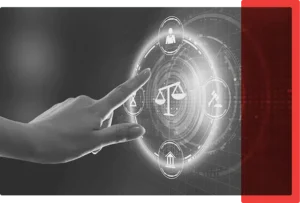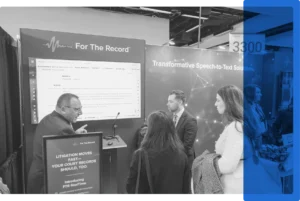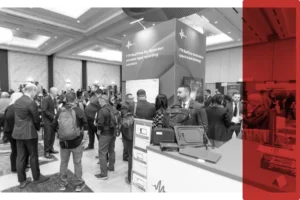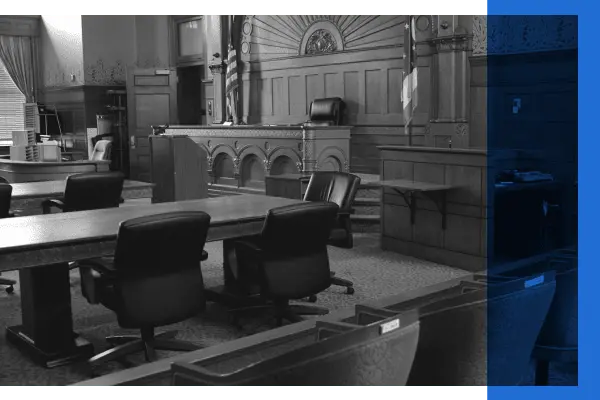
05 Oct
2022
Working for the record: Interview with a Digital Court Reporter | Part Two
This is part two of three in a series of interviews with Digital Court Reporter, Margaret Morgan.
The appetite for courtroom modernization has experienced significant growth around the world and across America since the onset of the pandemic.
Consequently, the level of innovation in legal and justice technology continues to build exponentially to meet the demands for increased efficiencies and access to justice.
In the next installment in this series, District Court Reporter Margaret Morgan elaborates on how innovative court technology has been leveraged in Minnesota to boost efficiencies. Additionally, Margaret explains how that technology was utilized and adapted to maintain operations during the pandemic.
Margaret also discusses the benefits, challenges, and surprising aspects of working in this role for 28 years.
How do you leverage technology to ensure the system and processes used to capture the court record are as efficient as possible?
The audio is stored in a manner where, within seconds, I can access a hearing that occurred some time ago and replay it in the courtroom. From chambers, from the bench, or even at home, a judge has the ability to access and refer to annotations, search for a hearing or segment of a hearing via a term or file number, and click on a timestamp to instantly replay the audio. All of this can be done without my assistance.
This is possible even if the hearing occurred before another judge or in a different county in the district. I don’t even have to be present. If the judge wants a law clerk to research an issue or listen to a proceeding, the law clerk has access to the audio. Law clerks working from home routinely access hearings live or that occurred previously.
This was especially helpful during the pandemic restrictions, when judges shared law clerks and we were all in different locations.
For an example of retrieving audio: when a defendant tells the judge they were never told to stay out of Kwik Trip [store], I can replay that previous hearing and the defendant can hear the judge say, “You cannot enter Kwik Trip; do you understand that?” And the defendant can hear their own voice responding.
Or, if a dispute arises about an agreement reached at a prior hearing, I can immediately check my notes or the notes of another digital reporter, and instantly access the relevant audio. I replay the audio in the courtroom, the issue gets resolved, and the hearing proceeds. This eliminates a delay in the proceeding and the cost of a transcript.
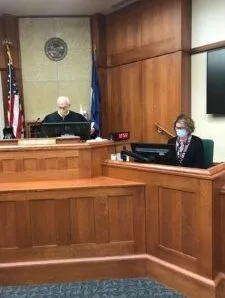
For The Record worked closely with us to mitigate the impact of the COVID-19 pandemic. We utilize Zoom for our remote hearings. With help from For The Record, we simultaneously record the hearing in Zoom and through FTR Reporter with one computer when working remotely.
The For The Record audio is simultaneously stored on the hard drive of the computer and a local server, and overnight it is backed up to another server located somewhere else in the state. I also backup my audio and notes to an external hard drive. I also save all Zoom recordings. I actually make two separate copies.
Recently, we were in the second week of a jury trial. An important witness was traveling, contracted COVID, and was required to quarantine. Instead of interrupting the trial, he testified remotely—from another country!
For people who might be interested in learning the process of digital court reporting, what are the most enjoyable, and what are the most challenging, things about your role?
Every day is different. I am constantly learning about things on a wide variety of topics—anything from medical malpractice to car accident reconstruction. The topics are endless.
Criminal cases make up most of the caseload. I’m actually surprised that I’m still surprised about what happens in our world. You would think after over 28 years, I’d have heard it all.
I enjoy working in the judge unit. I have a great boss and we are a true team. I have always felt supported by District Administration.
Additionally, the technology has changed how I work. The quality of the record just keeps improving and it is so much more versatile, efficient, and secure. I find the technology changes both enjoyable and challenging. It is important we embrace the changes because it enhances our work. We just get more and more efficient with it.
My transcript workload is a challenge at times. Since we are paid separately, transcripts are done outside of regular work hours on personal equipment. I don’t mind doing transcripts on a Saturday in January when it’s 10 degrees below zero and snowy outside. However, in the summer, I’d rather be outside. The benefit of the digital record is I can easily contact a fellow court reporter or AAERT certified transcriptionists for help.
What has been the most surprising part of working in this industry?
The animosity from other reporting methods and how they intentionally incorrectly portray digital court reporting—even though they often rely on the digital audio recordings too.
I’m also surprised when I hear that courts treat digital court reporters differently than stenographic reporters in salary and benefits. Fortunately, I work for a court that recognizes both methods equally. Except as it pertains to method, the job descriptions are identical, as are the salary and benefits.
When someone says a stenographic reporter has more education, I think it’s important to consider that stenography school education. Most of the time spent in stenography school is focused on learning to write steno and improving their speed, which is a great skill that takes two-plus years to master.
However, the academic components focus on English, grammar and punctuation for transcripts, the judicial system, and medical terminology all of which are available in any school and in the digital court reporting programs—which one can get through much faster.
Most of the digital reporters last hired in my district hold four-year college degrees in paralegal studies and/or were English majors. I think we even have a couple with master’s degrees.
What are the benefits of working as a digital court reporter? Any drawbacks?
I’m confident in the quality of the record I capture. I can verify/confirm any part of the record by listening back to the audio. The digital recording systems are stable and versatile. Malfunctions are rare, and if they do occur, there are processes in place to mitigate issues.
In our district, the digital court reporters work closely with IT on the courtroom technology installation. We are supported by District Administration to give input on microphone placement, sound settings, and more.
We have 36 courtrooms in our district that are configured similarly. Taking the additional time and involving the digital court reporters ensures the quality of our digital record. It was a great collaborative effort that benefits everyone. For The Record was extremely helpful in this process.
The primary drawback is it takes a digital court reporter longer to prepare a transcript. But I can always get help from professional transcribers and my fellow court reporters. That said, the percentage of hearings I report that actually get reduced to writing is pretty minimal—and I work for a busy judge!
Furthermore, with the development of automated speech recognition [or speech-to-text software], the time required to prepare certified transcripts will decrease significantly. While it still has a ways to go, it is improving every day.
Stay tuned for the final part in this three-part series of interviews with Digital Court Reporter, Margaret Morgan. Read part one here or part three here.
